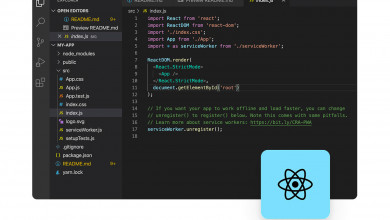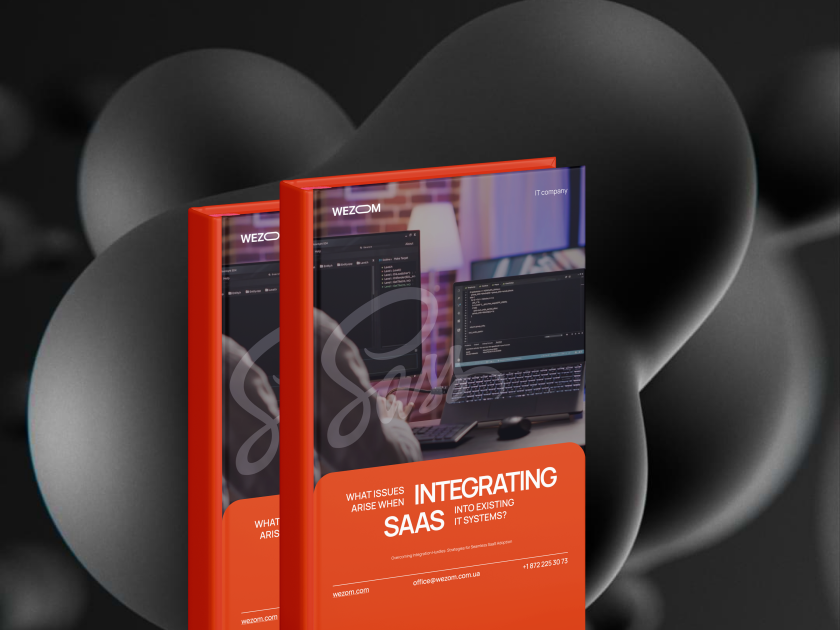Currently, the IP telephony market is stagnating. The target audience is forced to choose between large providers that work with outdated technologies and do not care about providing a good user experience. Also, the quality of communication suffers, technical support is of poor quality, services are difficult to customize, and their prices are prohibitively high.
That is why there was a request for convenient VoIP phone systems for business. With this idea, the client ordered custom SaaS development services from WEZOM to build the web platform.
Who Is Our Client?
WEZOM had a chance to cooperate with one of its previous clients, a large hosting provider. The company had a very ambitious and promising idea: to launch its own cloud-based VoIP service that would surpass all existing online telephony solutions.
The Client's Request: Build Brand-New SaaS VoIP Solution
WEZOM has previously partnered with this client: in particular, we helped their company create several successful products for host providers. Therefore, when a client presented us with an idea to conquer a new business niche, we gladly agreed to bring it to life.
While the client didn't have a full list of technical specifications, they reviewed several technical specifications examples to better structure their vision and define key functionality for the final product. At the stage of collecting requirements and consultations, we worked out the architecture of the project and transferred it into the form of flowcharts.
As a result, the final goal of the project was formulated: to create a VoIP platform with a microservice architecture that would include several products for providing services on the SaaS model.

What Goals We Followed and What Services We Provided?
As part of VoIP development services, the WEZOM team had to perform the following tasks:
- building a VoIP infrastructure for a project
- creation of a web platform for the presentation and sale of services
- development of a personal account with extensive VoIP settings
- implementation of customer service for making calls

What Technologies Were Used?
To build a cutting-edge service in its niche, the WEZOM team used ReactJS framework. This tool allowed us to build a fast and reliable system that can be modified, maintained, and developed with minimal effort. We also used ready-made solutions and services for organizing online telephony (for example, billing systems) and connected them via API. This allowed our team not only to reduce the budget of the project but also to provide it with perfect compatibility with industry standards.

Our Workflow and Top-3 Challenges
We worked according to the principles of Scrum and practiced an iterative approach. Our team formed a pool of tasks and moved through them in monthly sprints. First, we focused on the development of key functionality, and then consistently improved it based on client feedback.
During the development process, the client analyzed the business logic and added new features to the task pool. We also held weekly (and sometimes more often) meetings and phone calls with the client. Moreover, the business owner took an active part in the discussion of the results of the sprints and provided our developers with the necessary feedback. This provoked significant transformations in the initial concept of the project, but we were ready for this and implemented new functionality consistently, over several iterations.
As a result, the main part of the work on the project took about 10 months. After that, our team focused on improvements and further expansion of the platform.
If we talk about the main challenges that we faced while working on the project, they include:
- lack of experience in the VoIP industry and the necessary experts in our team;
- agreeing on the initial project architecture;
- regular updates of the project requirements by the client.
What Problems Did Our Team Face?
Although the client's team had tremendous technical knowledge in the relevant business niche, they had their own vision of the new product development process. In particular, at the very beginning, they were convinced that the implementation of this project was simple and fast. At the same time, our team had to reasonably defend the opposite point of view: the fact is that a project of this type needed a developed architecture that would provide it with stability and a long lifecycle. This, in turn, required more development time and, accordingly, more effort.
However, we were convinced that if at the initial stages of the project implementation, we choose the right solutions for its architecture, after several years of development it would not lose its growth potential, and its support will be as simple as possible. Therefore, instead of creating a new solution from scratch over the years, we offered the client to work out the backbone of the project in detail.
Thanks to numerous discussions, we managed to defend our vision of the development process and, as the practice has shown, this has benefited the project.
What Solution Did the Client Need and What Was the Result?
Although we did not previously have relevant experience in the field of creating VoIP solutions, the development of a new product was successful. In particular, we have implemented a system consisting of three main components:
- web platforms, a website with a presentation of the service itself in the form of several tariff plans, the option to buy them, as well as access to a personal account;
- a personal account for users, where users can pay for services, choose a virtual number, update the current service package, and fine-tune;
- digital IP phone with a dial pad, contact log, caller list, functionality for recording, routing, and forwarding calls, etc.
To start using this solution, its customers can either download one of the many third-party SIP clients, applications for online telephony like Zoiper, Phonerlite, etc., or go to their personal account through a web browser and thus access the built-in client for calls. Both of these methods are quite convenient, although the first one still requires some manual settings.
As for the unique features that distinguish this B2B solution from existing analogs on the market, these include:
- the ability to directly access the functionality through a web browser;
- fine telephony settings for professionals (for example, interactive voice menu (IVR) templates);
- ease of integration achieved through cloud infrastructure (to connect online telephony, the user needs about 15 minutes).
In general, we launched a SaaS service that is equally convenient for both beginners and professionals. Now, our client's plans are to expand the geography of the service, add SMS messaging functions, and connect new modules for integrating telephony into popular CRM systems.




